Small white jellyfish. The most poisonous and dangerous jellyfish of the Black Sea
Hello, dear fans of rest in the Crimea!
What jellyfish can be found in the Black Sea? Description of marine life, their photos and videos. What to fear during the holidays in the Crimea.
What jellyfish live in the Black Sea
Extraordinarily beautiful jellyfish in the Black Sea and in all other corners of the planet are the most ancient inhabitants of the Earth. Their age is in the hundreds of millions of years, and the appearance and simple structure of the body are unchanged from that very time.
As Pelagia, as a rule, the Mediterranean and among the most disobedient jellyfish of our seas. Located in the northernmost parts of the Italian seas, it is more and more common along our shores. Dandruff is not very dangerous, but it is better not to touch it, because it causes mucus in which nettle cells are present, and if you come in contact with this last one, you may have irritation.
Small, maximum 30 cm, placed on the seabed. It is directed upwards because it has unicellular algae, similar to coral coral formations that live in symbiosis with jellyfish and that the latter should expose the light that filters in the water. It is usually found on sandy peaks, but can also be found on rocky peaks. Symptom Do not swipe, but it is better not to touch it.
The composition of jellyfish - about 98% of the water collected in a jelly-like mass. Only the presence of muscle fibers and the simplest digestive system allow us to classify them as an animal organism. Jellyfish move slowly due to muscle contraction, but they cannot swim against the current. The inability to resist currents led to the fact that jellyfish on the Black Sea coast scornfully, but quite scientifically called plankton. But how can this plankton ruin a beach holiday!
It looks like a fleshy riftostomy, but does not have a typical purple border. It is very beautiful and in some countries is used for food purposes. It is distributed along the coasts of Portugal and generally across the Atlantic. Dandruff is similar to, but less frustrating.
Umbrella can be up to 30 cm in diameter, the steering wheel has four oral arms that can reach up to a meter in length. The upper part of the umbrella is decorated with 16-wadded stripes, which start from the center of the umbrella and reach the edge, where there are 24 tentacles, in three groups. He lives in the Atlantic and is very far to the north, for example, in the Norwegian fjords, where he can reach high densities.
Science knows more than two thousand species of jellyfish. There are only three of them in the Black Sea: Aurelia, Mnemiopsis and Cornerot. According to last year's data, especially many jellyfish are found near Evpatoria, Odessa, and in the region of the Kerch Strait, where the Black and Azov Seas are connected. Analyze to implement your plans for this summer. There is also an anomalous number of jellyfish on the west coast of the peninsula: in the area of Karnikitsky Bay and near the village of Black Sea.
In the Mediterranean it is not abundant, but frequent. It is harmless to humans, although it is good not to touch her. One of the most beautiful jellyfish in the Mediterranean: an umbrella can measure up to 30 cm, very stiff and rounded in the center, where it has a reddish or yellow color. The outer part is mobile and makes it move with energetic pulsations. Under an umbrella, the handle resembles a bouquet of wildflowers with blue-purple buttons inserted into thick hands.
Some tentacles, also ending with blue buttons, come out of the rudders. Functionally, therefore, you can define a “plant” even if you can feed zooplankton. A lot in the Mediterranean, especially in the bays. Most common in the most southern Italian seas, almost to show preference for warmer waters. At the moment, it is present only in the Eastern Mediterranean, but it can expand and reach us. If you see this, you need to provide a photo to confirm the report.
Aurelia aurita - the most numerous type of jellyfish in the waters of the Black Sea. Aurelia eared, as its local fishermen call, usually does not exceed 30 cm in diameter. With a seasonal increase in the number of this species, sea water is literally a compote of translucent amorphous bodies. This is quite unpleasant, but completely painless for a person. This amount of aurelia is explained by the fact that they easily maintain the temperature of seawater up to 30 ° C. Photo below
It is harmless to humans, but very harmful to the marine ecosystem. It does not float with body pulsations, but it has eight brilliant bands that, beating themselves, are powered by thrusters. Arriving in the Black Sea in the 1980s, transported by the ballast water of a US tanker, for decades it was limited to this basin. A bit harmful, enough to ruin the day.
Pearl sides from polyploid forms that live below. After a period of rest, he vigorously kills an umbrella and rises to the surface, then sinks to the bottom with extended tentacles. Through the descent, the jellyfish catches and catches the plankton that it feeds. When they rise from the bottom, you have the impression that these jellyfish are attacking us, but they are not. In recent years, it has been abundant along the coasts of Tunisia.

Mnemiopsis leidyi - view without tentacles. They are unable to sting, but they glow very nicely in the dark. These are alien jellyfish, not the indigenous inhabitants of the Black Sea. Here they got from the shores of the United States. Their incredible gluttony is a serious threat to industrial fisheries. After all, Mnemiopsis does not stop devouring fish eggs even when its stomach is full. He simply pushes the excess food in the form of a ball of mucus and then destroys the eggs and plankton. At the same time without food easily costs up to two weeks.
They never form large benches, but can be locally numerous. The umbrella is about 10 cm in size, armed with eight long tentacles, which, extended, can even reach ten meters. The mouth has eight long long oral hands, the body color is purple. The vast majority of jellyfish bites belong to this species.
White and covered with white spots, of which the name: jellyfish. Originally from Australia. The one who is amazed feels very heavy and rarely sees an animal. Some bathers who suffered from our shores were hospitalized. A large gas bubble, called pneumothorax, floats in a colony consisting of a mouth that absorbs prey, and polyps, armed with cledocysts with a powerful poison, are also very effective against us. Moreover, they are not separate individuals, such as jellyfish, but colonies.
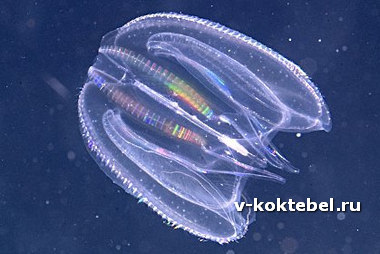
The most dangerous for humans species of jellyfish of the Black Sea
Jellyfish of the Black Sea constantly inhabiting our shores (photos of the most interesting specimens can be seen here) do not pose any serious threat to people. But, according to the deputy director of the Institute of Biology, Alexander Boltachev, corneta ( Rhizostoma pulmo) - the most dangerous poisonous jellyfish of the Black Sea (photo at the top of the page) appear in abundance off the coast in August and September.
Tentacles are short and not armed with dangerous cledocysts for us. It can't hurt us, and watching her in her surroundings is really a show. How do you know this? is the largest jellyfish in the Mediterranean: its umbrella can be up to 60 cm in diameter and can weigh up to 10 pounds. Color is white, with a blue rim on the edge of the umbrella. The steering wheel is big: it looks like white cauliflower. He does not have one big mouth, but so many small mouths. Portamento Rhinostomy majestically, impulses slow and powerful.
For many people in Southeast Asia, especially the Chinese, this is a delicious dish. It is abundant along our shores. These large jellyfish, often present in large quantities, become microcosms used by other organisms and, therefore, a haven for fish that are transported by currents: you can also find small crabs that live comfortably among its oral hands. Chains can also be 6 meters long.
Large blue handsomes should be avoided because their tentacles significantly burn. Following a strictly scientific approach, it is not even tentacles, but elongated oral growths. If you catch a jellyfish cornea, you must keep it strictly behind the upper part of the amorphous body, in no case touching the processes. Especially jellyfish in the Black Sea are dangerous to the mucous membrane of the human eye. Be sure to take first aid equipment with you when planning
The demographic explosions of these animals are sudden and last only a few days. Democratic salts form very large banks that develop far from the coast. Absolutely harmless to humans, although it is good not to touch him. Also known as the San Pietro boat, Velella is not a jellyfish, but a floating colony of polyps. The colony is about 3-7 cm, and the blue polyps are attached to the chitinous float with a "sail", which brings the colony to the run with the help of the wind.
The colony, at the end of its life, which lasts several months, produces jellyfish a few millimeters, adults, which will produce fertilizer with other floating colonies of polyps. Common in the Mediterranean, does not live in suspension in water, but. It can be present in huge swarms and even a few kilometers.
Jellyfish of the Sea of Azov
In the seas of our country there are two types of jellyfish that can leave burns. , or the eared jellyfish, can grow up to 40 cm in diameter. These are round jellyfish with four rings in the center of the cap. Burns from this jellyfish are very weak, but if toxins get into the eyes (usually through the hands), they will cause a burn of the eye, which will take several days. more poisonous jellyfish. It has large tentacles, and the bezel of the cap is colored in purple or blue. Meeting with her always ends in burns. Irritation usually goes away in 1-3 days.
Inevitably, they find the coastline, and they swim, but this usually occurs at the end of the cycle, when the jellyfish have broken away from the colonies. This was described by a team of researchers from the University of Salento and the University of Padua. Where did you see him? The so-called after the Croatian biologist Adam Benovich is a species very close and almost certainly arrived in the Mediterranean Sea, transported by the ballast waters of commercial vessels. Since then, the view seems to have disappeared. Umbrella reaches 5-6 cm in diameter. Like her sister, she has eight long tentacles and numerous protrusions on the top of an umbrella.
Medusa is one of the most ancient inhabitants of the Earth. Appearing more than 650 million years ago, they have changed little. Practically all jellyfish are a gelatinous organism, containing more than 95% of water in its composition. Only muscle fibers make jellyfish a full-fledged body. The jellyfish lack organs inherent in many other organisms. But there is a stomach directly connected with the mouth. The oral opening, in turn, is also a waste opening. In many jellyfish, the mouth and the stomach perform not only the digestive function, but also the movement function. Medusa fills the stomach with water and pushes it out. So she moves in the direction she needs.
But the color is yellow ocher, with the exception of white tentacles and thin oral hands placed under an umbrella, forming a long white and transparent lining. Another clear sign of recognition is the presence of cord-like reproductive structures that form a pattern similar to a white-stone four-leaf clover.
Beautiful angel fish and one in the Red Sea. Also called the San Pietro boat. At first glance, Heraclem Sosnowski is a rather anonymous plant, except for the fact that it can grow up to five meters in height and plant roots up to two feet underground. It looks as harmless as big dill, but touching it is a serious problem. It burns the skin and can also lead to death. Keep it away from your eyes, you can make it blind!
Jellyfish are an integral component of all more or less salty water bodies. There are many types of jellyfish found both in shallow water and at a depth of more than 10,000 meters; both poisonous and completely harmless; both huge and very small; heat-loving and found among the ices of the Arctic.
There are three types of jellyfish in the Black Sea: Aurelia, Cornerot, Mnemiopsis. All Black Sea jellyfish are not dangerous. But troubles bring both holidaymakers and fishermen.
And I think he killed nine-headed water! In the 1940s, agronomists tried to use it as grass for the production of canned food, but the Soviet cows did not want it. Easily confused with Sylvester Zhirrdinsky, which is absolutely harmless. Therefore, if someone tells you that he played with Heraclem Sosnowski without consequences, he simply misses the plan!
Where it grows: European Russia, the Urals, Siberia, Altai. When it is most dangerous: June, July, August. How to protect yourself: do not touch it! The presence of these flying monsters may not be so obvious in Moscow, but if you spend a weekend in the countryside of Dacia or if you go to Siberia, it will be a serious problem. This unforgettable buzz is enough to make you go crazy. Mosquitoes love swampy areas, so don’t forget your most powerful spray if you decide to travel to the Urals, Siberia or Karelia in July and August.
Rhizostoma pulmo common name
jellyfish Cornerot
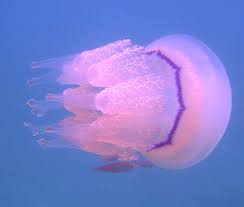
Fishermen call alikon or alikon. This is the most famous Black Sea jellyfish. Not because it occurs more often than others, but because it stings more often than others.
Carnerot can be recognized by a large hat, up to 50 cm in diameter, and large fleshy root-like outgrowths. This is not a tentacle. The Cornerot has no tentacles, their oral lobes ramify, forming numerous folds fused together. The ends of the oral lobes do not form folds, but end with root-shaped processes.
You will probably find out that an insect is splashing your skin only when the juicy beast is already full. Only female mosquitoes bite because they need blood for reproduction. They find their goals after the warmth of the human body. They can spread malaria and other diseases, so it is important to try to keep them at bay.
It is curious that in some Russian cities monuments were erected on these flying vampires, for example, in Chelyabinsk in the Urals region or in Noyabrsk and Salekhard in Siberia. Especially from Central Russia to Siberia. They put their eggs in the water, and for this reason the swamps usually burst.
Cornerot is a predator, preferring meku fish, worms, small crustaceans. With their poison, they paralyze the prey and successfully eat it.
In the Black Sea, this species is widely distributed. Especially a large number on the coast appears in the second half of summer. This is not the most pleasant component of the rest, but not dangerous either. The poison of a single corneta is not lethal for a person, and pain after a burn is not much stronger than nettle.
When they are more dangerous: from spring to late autumn. How to protect yourself: use mosquito sprays, mosquito nets, mosquito nets caps. Walking in the woods with friends is a very popular activity in Russia. Doing this is always relaxing and good for the soul.
According to some Scandinavian legends, the warriors of Northern Europe ate a little evil, Ovolo, before the battle, in order not to feel pain anymore, and this turned them into formidable fighters. We do not know how true this story is, but the hallucinogenic properties are known by the evil eye. It is unusual to die for this mushroom, but, of course, it is better not to try: an inverted belly is the smallest thing you can expect!
Cornerot is sensitive to changing weather conditions. For example, before a storm jellyfish depart from the coast and go to the bottom.
Aurelia aurita Aurelia, or eared jellyfish
jellyfish aurelia
![]()
The common name for Aurelia or Austatius. Fishermen called sherih.
Aurelia reaches 40 cm in diameter. The "hat" is translucent, most often colorless, sometimes found with a slight shade of blue, pink, purple.
To distinguish it, look under the hat. Usually edible mushrooms have a lower surface of a spongy and smooth hat, and almond halides have very thin ribs. Also on the stem there is a white ring with yellowish reflections. Simply swallow a small piece of this fungus to die, or, most importantly, have permanent liver damage that causes lifelong or transplanted hemodialysis.
The first symptoms of poisoning are headache, nausea, and general weakness. Where they grow: in coniferous forests throughout Russia, with the exception of the southern regions of the country. When they are more dangerous: from late July to late autumn. How to protect yourself: do not pick mushrooms, you are not 100 percent safer. This applies not only to Russia, but to the whole world. Repeat several times before eating. Ask the opinion of an experienced mycologist.
Aurelia is carnivorous. The diet of Aurelia includes mollusks, crustaceans, shell larvae, crustaceans, rotifers, protozoa, diatoms.
Aurelia’s habitat is the coast. The optimal temperature for Aurelia 9 is 19 C0. , although it can withstand water temperatures as low as -30 ° C.
Mnemiopsis leidyi
jellyfish mnemiopsis

Mnemiopsis is a jellyfish that does not have tentacles and stings. The length reaches 10 cm, 6 cm wide. This organism has the properties of bioluminescence - the ability to glow.
Sexual maturity of both female and male individuals occurs on the 13th day of life. The mneenopsis is able to fertilize itself. Spawning occurs only at night. One individual is capable of producing 8000 eggs. After fertilization, the embryo is fully formed as a jellyfish at the 20th hour of life.
Mnemiopsis feeds mainly on caviar of small fishes (sprat and so on), zooplankton. This organism will continue to consume food even after full filling of the stomach. When the stomach is full, excess food is released in the form of a ball of mucus. If there is no food available, Mnemiopsis can survive up to three weeks.
Menniopsis is not a native of the Black Sea, but a native of the eastern shores of the United States and the West Indies. The invasion of this species in the Black Sea has done significant damage to fisheries. Currently, measures are underway to reduce the number of this species.
Hydroid Jellyfish

Class Hydroid - Hydrozoa - include about 2,800 species. In the life cycle in most hydroid polyps (Hydrozoa), as in most intestinal cavities: in the scyphozoa (Scyphozoa) and the cub jelly (Cubozoa), the sexual phase of the life cycle, the jellyfish, dominates. This group of medusoids has its own distinctive features.
The digestive system of hydroids is represented by the gastric cavity, which does not have partitions. Throat is absent. The ectoderm and endoderm converge at the edge of the oral opening.
Digestive juices in the intestinal cavity of the hydra are secreted by the glandular endoderm cells.
Tentacles are hanging along the edges of the umbrella, out of maybe 4, 8, 16, rarely more. At the base of the tentacles or between them are the senses. From the inner side of the umbrella edge, the ectoderm forms an annular protrusion, the so-called sail or velum.
Genital products are formed in the ectoderm. Nervous system diffuse (dispersed in the body) character. Nerve cells - neurons - form neural networks and plexuses.
The hydra ectoderm contains epithelial-muscular, stinging, intermediate, nerve and pigment cells.
During regeneration of the hydra's body, new cells are formed from unspecialized intermediate cells.
Along with hydras, the hydroid class combines a large number of species of marine colonial polyps. Marine hydroids lead an attached lifestyle. Their colonies look like small bushes.
The presence of hydrodose jellyfish in the Black Sea has not yet been detected.
What is dangerous jellyfish
Jellyfish are considered the most ancient inhabitants of our planet, they are about 650 million years old, and during this time they have not changed much and remained in the same form as they were millions of years ago. Jellyfish are dome-shaped, they consist of 95% water, and the presence of muscle fibers makes the jellyfish look like jelly. There is no organ as such for the jellyfish, but for that is, a hole into which food gets and processed there, and the end result of processing goes through that hole. Jellyfish come in completely different sizes and they live in shallow water as well as in great depths, jellyfish can live in warm waters as well as in very cold waters, they are even found near the ice of the Arctic.
Why jellyfish sting
The body of a jellyfish is covered with special cells that inject toxins into everything that comes in contact with. Most of the stinging cells are on the tentacles of the jellyfish and the rim of its cap.
Jellyfish that live in the Black and Azov Sea, do not pose a threat to human life. The stung place quickly blushes. Most people just feel uncomfortable because of this. But experts still recommend immediately go out of the water to the shore.
Jellyfish burn
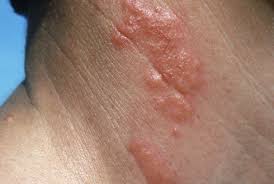
A jellyfish burn can cause pain shock
In allergy sufferers, children, the elderly, and people with cardiovascular diseases, the reaction to a jellyfish burn can be hazardous to health. Stung feels severe pain, it is given in the nearest joints, and then spreads to the whole body. Because of the shock a person can stop breathing. There are no jellyfish in the seas of our country with such strong toxins, but in the seas of Southeast Asia there are plenty of them.
First aid
First aid for the bite or burn of a jellyfish how to treat burns and jellyfish bites
The stung place must be rid of the tentacles of the jellyfish and poisonous cells (rinse with water). They are not visible to the eye, so you should always carry out prevention. The place can be well wiped with a towel or sand.
For burns caused by jellyfish, wash the affected area with salt water. It is not recommended to rinse the affected areas with fresh water, in which the burning enzymes can be activated. If you took the jellyfish in your hands, do not touch the face after that, wash your hands well with soap and water. If the face is burned with jellyfish, wash only the eyes with copious amounts of warm fresh water and consult a doctor for help.
After that, poison should be neutralized. Places of burns on the body can be wiped with vinegar, this will largely relieve irritation, you can use soda solution, liquid ammonia or alcohol.
To speed recovery, use an anti-inflammatory agent in the form of a gel or ointment (such as rescuer or others).
The stung place should be protected from sunlight.
Ultraviolet radiation easily burns damaged skin and a sunburn appears on it.
If a blister appears, the meeting with the jellyfish does not always end only in redness. A jellyfish burn can cause large blisters. First aid will be the same, but be careful - do not burst the bubble. To protect the blister from breaking, a bandage bandage should be applied to it.
Sometimes on the beaches one can observe how some lovers of self-treatment rub themselves with jellyfish in the hope of getting rid of rheumatism, sciatica, neuralgia. Such a "treatment" is unacceptable, it can lead to unpredictable consequences, since the venom of jellyfish is still poorly understood.
How to treat a jellyfish burn at home

Pills and injections from the bite of a jellyfish
Fenistil.
This is an antihistamine drug of the first generation. It is recommended to take a capsule and apply a gel with the same name on the burn. This drug simply blocks the body's response to stimuli. need three times a day throughout the week.
Eden.
It is a syrup with a pleasant taste. The drug is an antihistamine of a new generation. It has a small number of side effects, which allows the use in elderly patients with heart disease.
Diazolin
This is the most inexpensive antihistamine drug, which has a large number of side effects. The drug belongs to the means of the first generation, respectively, it should not be taken by people with a bad heart and young children.
Suprastin.
Belong to antihistamines of the first generation. It is also an effective remedy for allergies, with an impressive list of side effects.
Citrine.
Refers to third-generation drugs that do not cause drowsiness and do not affect the state of the cardiovascular system. Analogs of Citrine is Erius, Trexil, Loratadin. These medicines can be taken for several months.
Diprospan.
This medication is used by ambulance paramedics to suppress an allergic reaction. It is a glucocorticosteroid, which, when administered intramuscularly, quickly enters the bloodstream and immediately eliminates all the symptoms of allergy. This is an emergency medicine, so you should not use it yourself.
But Shpa.
Medopred
Corticosteroid for quickly relieving the symptoms of a severe allergic reaction. Used for angioedema and anaphylactic shock. This drug is used by emergency room ambulance doctors, when a person suffocates, he has swelling of the tongue and larynx. This injection is done most often by the bite of a purple jellyfish, the poison of which is very toxic.
The most dangerous poisonous jellyfish
Sea wasp. This jellyfish is extremely dangerous. Among those whom she stung, there are few survivors. She releases so much poison that can kill 50 adult men! It is found in Australia, prefers shallow places with reefs and algae.
Irukandji This marine resident is found in the waters of Oceania and Australia. Releases poison from the tip of a tentacle, which is not very painful. Accordingly, the victim ignores the bite. Through time, the poison spreads throughout the body, causing vomiting, nausea, paralysis, and back pain. Deaths from the bite of this jellyfish are few, but the consequences can be dire.
Physalia Portuguese ship. Not to notice the jellyfish is difficult, it has a beautiful dome that shines with all the colors of the rainbow. It is found in the Mediterranean Sea, in the Indian and Pacific Ocean. The bite is not very painful, so the victim continues to swim. When poison in the blood, there are failures in the respiratory and nervous system. A person can drown from cramps and paralysis.
Krestovik. It is found in the North Pacific. It stings very painfully. In contact with this sea dweller, it is worth getting out of the water, as there is dizziness, nausea, paralysis, numbness of the extremities. Completely poison leaves the body after 4 days.
Cyanea. Long, thin tentacles depart from the dome. In contact with them, a strong burning sensation is felt. There are not many deaths, but the consequences are not the most pleasant. The victim feels weakness, nausea and swelling of the mucous membranes. Medusa is rarely found in coastal zones, preferring depth.
The invasion of jellyfish on Tarkhankut
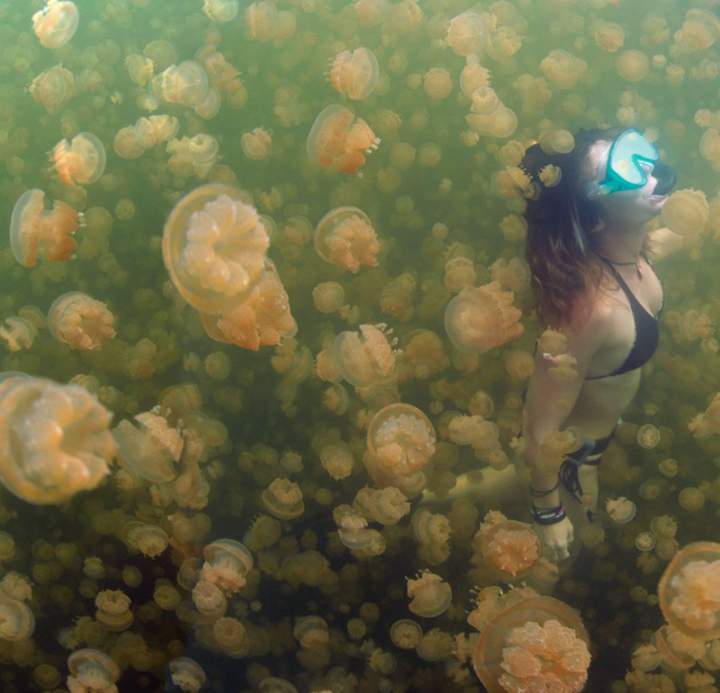
The invasion of jellyfish Olenevka The invasion of jellyfish Okunevka The invasion of jellyfish Golden By eye The invasion of jellyfish Donuzlav
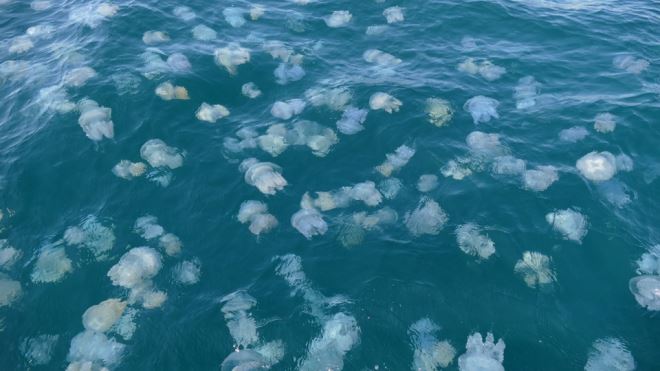
New Articles
- What is the highest peak of the Ural Mountains
- The most ancient religions in the world
- What continents are washed by the Atlantic Ocean?
- Can I wear jewelry of the deceased?
- Snake, Bowl and Staff: The Origin of Medical Symbols
- Interesting facts about hares
- Names of famous brands in other countries
- Karelo Finnish epic kalevala protagonists
- 17 18 weeks pregnant sensations
- Why do people become so aggressive
Popular articles
- Expression twice in one river, meaning and meaning
- Gusli - musical instruments
- Report: Temperature Scales and Thermometers
- Which side to sew on chevron
- How to draw emblems for school
- Unusual rivers of the world and the rivers of Russia - Rivers with sour water
- Numb of the little finger on the right hand: causes and methods of treatment
- Why development is important for a person
- Constellations from ancient atlases
- What happens at 31 weeks
